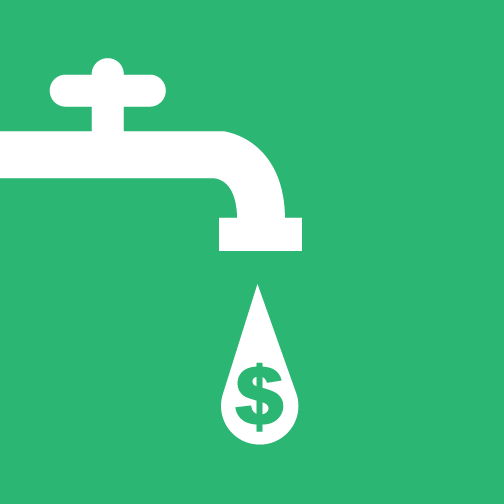A comparative analysis of economic trends in the nine states that do not levy an income tax and the nine states that levy the highest top income tax rates found that the latter group performed significantly better on more than half a dozen measures of economic well-being, the Institute on Taxation and Economic Policy said today.
The study, Trickle Down Dries Up, examines 10 years of data on measures such as state economic growth, average income growth and unemployment. The states levying the nation’s top income tax rates performed better on each of these measures than states without an income tax. The authors caution that the intent of the study is to evaluate the claim that low or no state income taxes lead to greater economic growth, and readers should not conclude that higher income taxes caused the economic growth seen in higher-tax states.
“A host of measures factor into a state economic growth, including taxes,” said Carl Davis, research director at ITEP and lead author of the study. “States need tax revenue to provide good public schools. They need tax dollars to support public health, public safety and infrastructure. All of these things contribute to a good quality of life, a good business climate and economic growth. Slashing personal income taxes is a single-minded solution to a complex challenge.”
The analysis is particularly relevant as federal lawmakers consider cutting personal and corporate income tax rates, and have begun looking to the states for lessons on how those cuts might unfold. Some analysts have pointed to the Kansas experiment, wherein state lawmakers drastically cut income taxes, as a cautionary tale. After three rounds of tax changes in 2012, 2013 and 2015, the state’s economy failed to grow as Gov. Sam Brownback and his allies in the state legislature promised, and the state could not raise enough revenue to fully fund basic services such as education.
While Kansas is a particularly dramatic example of drastic tax cuts gone awry, this study offers a broader look at the economic performance of states with starkly different income tax policies. Lawmakers and pundits often claim the economic success in low- and no-income tax states is proof that a deep federal tax cut would unleash significant economic growth, but this study shows that the growth occurring in these states is not particularly remarkable.
It also shows that although the purported economic benefits of forgoing income taxes have not materialized, states without personal income taxes do stand out in a different way: their reliance on regressive sales and excise taxes has resulted in above-average tax rates for low-income families and lower overall tax rates on the wealthy than any other state in the nation.
Key findings of the study include:
- States levying the highest top personal income tax rates are experiencing faster economic growth than states without such taxes, measured both in terms of aggregate GDP and per capita GDP growth.
- Average incomes are growing more quickly in the states with the highest top tax rates.
- Residents of states with the highest top income tax rates are more likely to have a job than people living in states lacking income taxes.
- Rapid population growth in the states without personal income taxes has not resulted in an improvement in economic well-being for the typical resident of those states.
“While proponents of income tax cuts often point to the states without personal income taxes as a model to strive for, these states have actually been less successful in fostering economic growth than states with relatively high income taxes,” Davis said. “The track record of states not levying income taxes suggests that the rhetoric of economy-boosting income tax cuts does not match the reality.”



